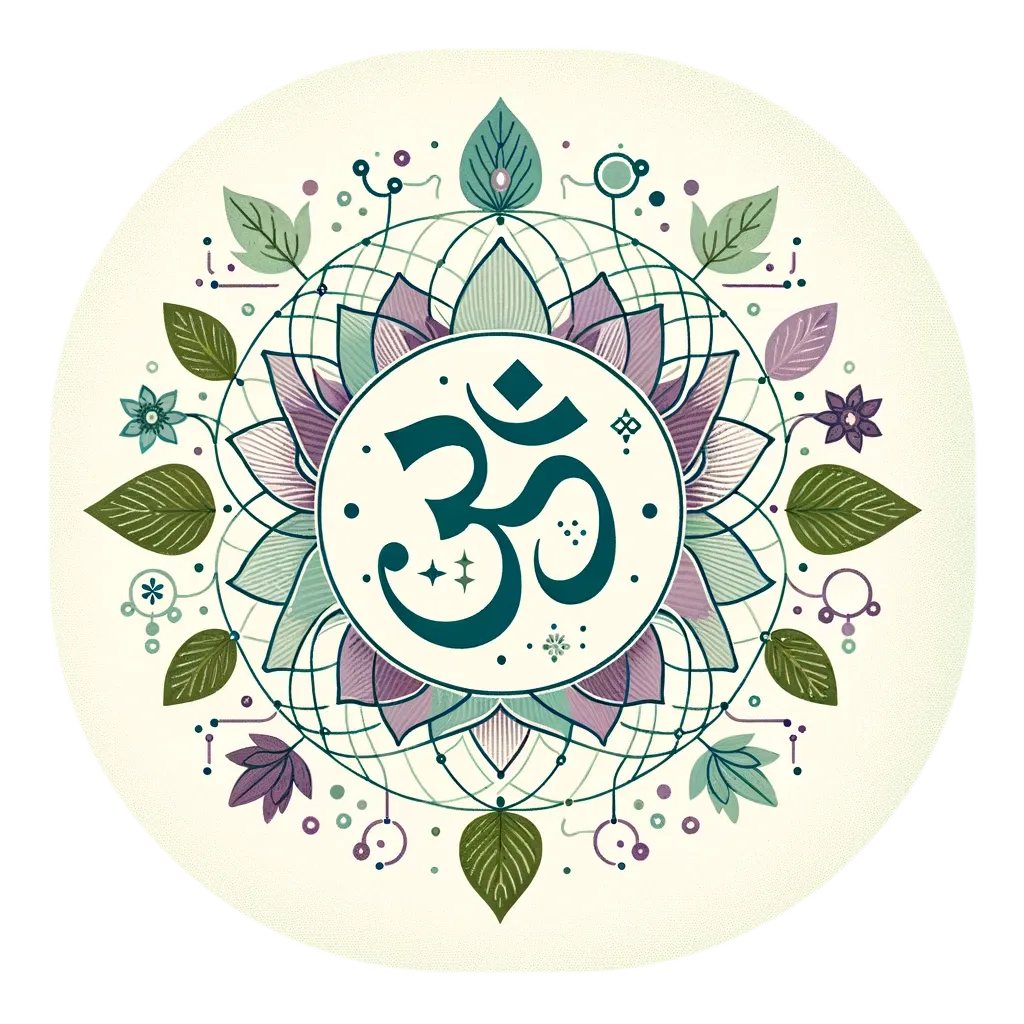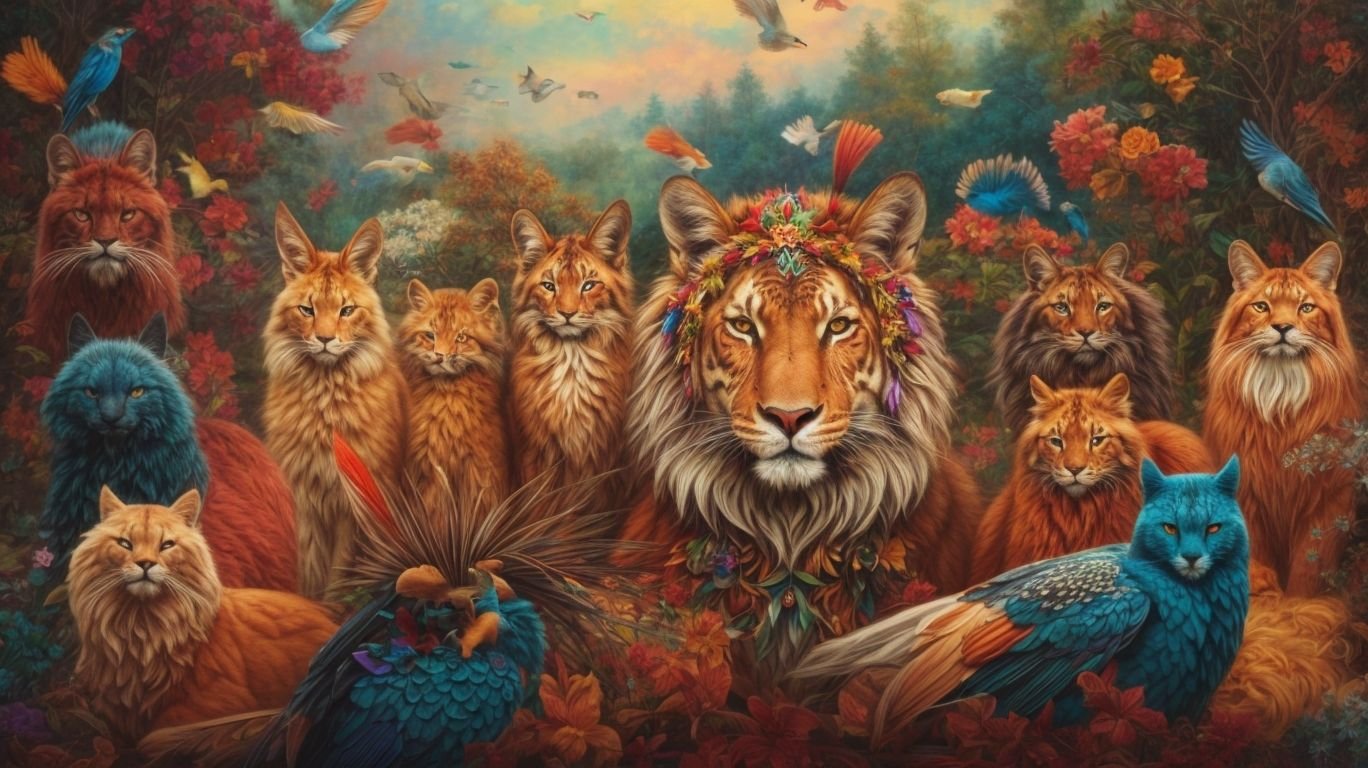Spirit animals have long been a fascinating and mystical concept in various cultures around the world. From Native American beliefs to African traditions, Asian practices, and European folklore, spirit animals play a significant role in spiritual and cultural contexts.
In modern society, spirit animals are utilized in healing and therapy, as well as being portrayed in popular culture and media. The controversy of cultural appropriation surrounding the use of spirit animals also exists.
This article explores the history, significance, and modern interpretation of spirit animals, shedding light on their evolution and influence in different religions and beliefs.
What Are Spirit Animals?
Spirit animals are symbolic creatures that hold deep meaning and significance in various cultures, symbolizing a profound connection between humans and the spiritual realm through animal guides.
These animal guides are believed to offer spiritual awareness, guiding individuals through life’s journey and providing them with wisdom and protection. Each spirit animal is thought to possess unique characteristics that mirror qualities or traits that individuals may need to embrace or work on. For example, a bear spirit animal may represent strength and introspection, while a wolf spirit animal could symbolize loyalty and teamwork. By connecting with their spirit animals, people can tap into their innate instincts and intuition, fostering a deeper understanding of themselves and the world around them.
The Role of Spirit Animals in Different Cultures
Spirit animals play a significant role in various cultures worldwide, serving as totems that embody cultural beliefs, shamanic practices, and spiritual guidance.
These diverse cultural perspectives often draw upon tribal traditions and ancestral practices to interpret the symbolism and messages carried by spirit animals.
For example, in Native American traditions, each animal is believed to possess unique qualities that can offer teachings and guidance to individuals. Among the indigenous tribes of Africa, spirit animals are viewed as mediators between the physical and spiritual worlds, guiding individuals on their life paths.
The connection between humans and spirit animals is deeply rooted in these ancient beliefs, shaping rituals and ceremonies that honor the interconnectedness of all living beings.
Native American Spirit Animals
Native American beliefs regarding spirit animals are deeply rooted in the connection between animal spirits and the inner self, reflecting a profound spiritual journey intertwined with nature’s wisdom.
The concept of animal spirits holds a paramount place in Native American cultures, symbolizing a unique form of guidance and influence in one’s life. The belief is that each individual has an animal spirit companion, chosen to assist and protect them on their earthly journey. This spiritual connection is seen as a source of inner wisdom and insight, providing a bridge between the physical and spiritual realms. Many Native American traditions view spirit animals as conduits of psychic abilities, enabling communication with the unseen forces of the universe and enhancing one’s intuitive understanding of the world.”
African Spirit Animals
In African traditions, spirit animals are revered as ancestral practices that embody guardian spirits, offering intuitive guidance and symbolizing a deep connection to the spiritual realm.
These animals, representing different qualities and attributes, play a significant role in animal medicine practices. Each spirit animal carries its unique symbolism, reflecting aspects of human behavior and characteristics to guide individuals on their life journeys.
African communities believe that by connecting with one’s spirit animal, a person can tap into their innate strengths and abilities. These spiritual symbols are intertwined with cultural rituals, ceremonies, and storytelling, passing down the wisdom of the animal kingdom through generations.
Asian Spirit Animals
Asian cultures view spirit animals as integral parts of tribal traditions, representing metaphysical connections to nature and embodying the wisdom of the natural world.
These sacred animals are believed to hold a divine connection to the spiritual realm, serving as guides and protectors for individuals and communities. The concept of spirit animals is deeply rooted in the belief that each animal possesses unique traits and strengths that can influence and guide humans towards greater wisdom and understanding. Through rituals and ceremonies, Asian cultures seek to invoke the powers of these spirit animals to provide guidance, healing, and protection in various aspects of life.
European Spirit Animals
In European mythology, spirit animals are symbols of inner strength and guidance, representing a rich tapestry of cultural beliefs and mythological narratives.
Many ancient European cultures believed that symbolic creatures served as messengers between the earthly realm and the spiritual world, emphasizing the spiritual connection between humans and nature. These spirit animals were thought to offer protection, wisdom, and insight to those who sought their guidance, acting as sources of empowerment and support in times of need.
Through the intertwining of cultural beliefs and mythological stories, spirit animals were revered for their ability to embody virtues such as courage, loyalty, and resilience, inspiring individuals to tap into their own inner strength and embrace their unique qualities.
The Significance of Spirit Animals in Modern Society
Spirit animals continue to hold significant relevance in modern society, being utilized in healing and therapy practices, as well as being prominent in popular culture representations.
From Native American traditions to contemporary practices, spirit animals play a crucial role in guiding individuals towards spiritual awareness and inner healing. These animal guides are believed to offer wisdom and protection, guiding individuals through life’s challenges and bringing clarity to their path.
In therapy sessions, spirit animals are often used as a tool for exploring emotional and psychological realms, providing a unique lens to understand one’s thoughts and behaviors.
The portrayal of spirit animals in popular culture has sparked a broader interest in these symbolic creatures, enriching our understanding of the complex relationship between humans and nature.
How Spirit Animals Are Used in Healing and Therapy
The use of spirit animals in healing and therapy contexts revolves around providing individuals with inner guidance and tapping into their inner wisdom through the symbolic interpretation of animal guides.
These spirit animals serve as companions on one’s spiritual journey, offering insights and messages that can aid in self-discovery and emotional healing. By connecting with the essence and qualities of a particular animal, individuals can cultivate a deeper understanding of themselves and their life experiences. This process allows for a profound exploration of the subconscious mind, unlocking hidden truths and empowering individuals to navigate their healing processes with greater clarity and purpose.
Spirit Animals in Popular Culture and Media
Spirit animals have become prevalent in popular culture and media, although the depiction of these symbolic creatures has sparked controversy regarding their symbolic significance.
The portrayal of spirit animals in various forms of entertainment often draws upon rich spiritual symbolism and animal meanings. Some view spirit animals as representations of inner characteristics or guiding forces, while others criticize their commodification and misinterpretation.
In literature and films, spirit animals are often used to convey deeper themes or serve as sources of wisdom and intuition for characters. Despite the controversies, many people find comfort and inspiration in the idea of connecting with a spirit animal and exploring the meanings attributed to these mystical beings.
The Controversy Surrounding Cultural Appropriation of Spirit Animals
The controversy around cultural appropriation of spirit animals raises questions about the respectful portrayal of these symbolic representations, especially concerning indigenous peoples and their cultural beliefs.
These creatures hold deep significance within indigenous cultures, serving as conduits between the spiritual realm and the physical world. To truly honor the essence of spirit animals, individuals should approach them with reverence and an understanding of their role in conveying animal wisdom to those seeking guidance.
Indigenous communities view these animals as sacred beings, not mere accessories or trend pieces, emphasizing the need for outsiders to educate themselves on the cultural context before incorporating these symbols into their lives or art.
The History of Spirit Animals
The history of spirit animals is deeply rooted in ancient wisdom and ancestral practices, reflecting the enduring significance of these symbolic creatures across diverse cultures and traditions.
Throughout the ages, spiritual guides have played a crucial role in tribal traditions and ancient beliefs, with spirit animals revered as powerful sources of guidance and protection. In many societies, these animals are seen as mediators between the earthly realm and the spiritual world, embodying qualities that individuals aspire to embrace or learn from. The concept of spirit animals is not limited to one specific culture but is found in various forms across the globe, highlighting their universal appeal and relevance in our human quest for spiritual connection.
The Origins of Spirit Animals in Ancient Beliefs and Practices
The origins of spirit animals can be traced back to ancient beliefs and practices, evolving through shamanism and shamanic practices that influenced the conceptualization of these symbolic creatures.
These ancient beliefs regarded spirit animals as guides or protectors that could offer wisdom and strength to individuals. Shamanism played a crucial role in enhancing the understanding of these power animals, often symbolizing an individual’s inner qualities or characteristics.
Across various cultures, folklore tales intertwined with spirit animals as beings that bridged the gap between the physical and spiritual realms. The evolution of these beliefs contributed to a rich tapestry of interpretations and meanings associated with spirit animals, shaping how individuals connected with the natural world.
The Evolution of Spirit Animals in Different Religions
The evolution of spirit animals across different religions has imbued them with diverse symbolic meanings, sometimes deifying these creatures as sacred animals with profound spiritual significance.
These spiritual entities often serve as guides in one’s spiritual journey, believed to offer wisdom and protection along the way.
Mythological narratives frequently intertwine with the concept of spirit animals, depicting them as messengers connecting the earthly realm with the divine.
The reverence bestowed upon these sacred creatures reflects a deep-rooted belief in their ability to provide insight and facilitate spiritual growth.
From ancient civilizations to modern-day practices, the presence of spirit animals continues to hold a significant place in the realm of spirituality and interconnectedness with the natural world.
The Influence of Shamanism on the Concept of Spirit Animals
Shamanism has significantly influenced the concept of spirit animals, emphasizing their role in providing inner strength, wisdom, and spiritual guidance to individuals embarking on their soul journey.
The belief in spirit animals dates back centuries and across various cultures, shaping how people interpret their spiritual connection to the animal world. These animal guides are seen as messengers from the divine realm, offering insights and protection along one’s path.
Through the practices of shamanism, individuals seek to deepen their bond with these spirit animals, tapping into the profound wisdom and energy they carry. This profound relationship nurtures personal growth, helps in overcoming obstacles, and illuminates the journey towards self-discovery and enlightenment.
The Modern Interpretation and Understanding of Spirit Animals
The modern interpretation of spirit animals revolves around their role in facilitating personal growth and self-discovery, fostering a deeper connection between individuals and their animal totems.
Spirit animals serve as guides on the journey of spiritual awareness and self-reflection, encouraging individuals to tap into their inner wisdom and intuition. By exploring the characteristics and symbolism of their animal totem, people can gain valuable insights into their own strengths, weaknesses, and hidden potentials.
This exploration leads to a greater understanding of oneself and the world, offering a path towards personal transformation and growth. Through this connection with spirit animals, individuals often find comfort, support, and guidance in navigating life’s challenges and embracing their true authentic selves.
The Role of Spirit Animals in Personal Growth and Self-Discovery
Spirit animals play a pivotal role in personal growth and self-discovery by forging a profound connection between individuals and their animal totems, guiding them on a transformative journey of inner exploration.
Through this spiritual journey, individuals are encouraged to delve deep into the symbolic representation of their spirit animal, drawing strength and wisdom from its unique qualities and characteristics. By embracing the teachings and messages of their animal totems, individuals can embark on a path of self-discovery, unlocking hidden aspects of themselves and gaining a deeper understanding of their place in the world. The guidance provided by spirit animals serves as a source of inspiration and empowerment, offering valuable insights that support personal growth and lead to a greater sense of purpose and fulfillment.
The Connection Between Spirit Animals and Animal Totems
The relationship between spirit animals and animal totems is defined by a symbolic interpretation that offers inner guidance, symbolizing a harmonious bond between individuals and their spiritual guides.
This spiritual connection between individuals and their animal guides goes beyond the physical realm, delving into the realm of animal wisdom and ancient knowledge. It is believed that spirit animals serve as messengers from the divine, guiding individuals on their spiritual journey and providing insights into their innate qualities and strengths.
Embracing the symbolism of animal totems can help individuals tap into their inner wisdom and connect with the natural world in a profound and meaningful way.
Frequently Asked Questions
What are spirit animals and their significance in history?
Spirit animals are believed to be animal guides or guardians that represent different qualities and characteristics. Throughout history, various cultures have revered spirit animals for their wisdom, strength, and connection to nature.
How long have spirit animals been a part of human culture?
The history of spirit animals can be traced back to ancient civilizations, with evidence of their importance found in cave paintings, mythology, and spiritual practices. It is estimated that the concept of spirit animals dates back thousands of years.
Do different cultures have different interpretations of spirit animals?
Yes, the concept of spirit animals varies across cultures and religions. For example, Native American cultures believe that each person is connected to a specific animal that serves as their protector and guide, while in Egyptian mythology, animals were associated with different gods and goddesses.
How have spirit animals been represented in art and literature?
Spirit animals have been a source of inspiration for artists and writers throughout history. From traditional paintings and sculptures to modern literature and films, these animals have been depicted as symbols of strength, wisdom, and spirituality.
Are spirit animals still relevant in modern times?
Although the belief in spirit animals may not be as prominent as it once was, many people still find comfort and guidance in the idea of having a spirit animal. In recent years, the concept has also gained popularity in the New Age movement and in popular culture.
How can I discover my own spirit animal?
There is no set formula for discovering your spirit animal, as it is believed to be a personal and intuitive process. However, some people find that meditation, paying attention to dreams and visions, and observing the behavior of animals can help them find their spirit animal.





